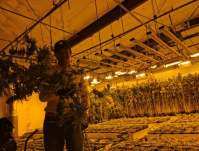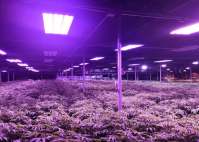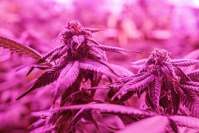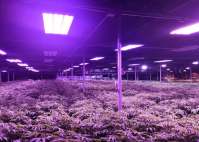Luminous flux can be simply understood as the amount of light passing per unit time and unit area. It flows out, flows through or flows into water in one second, and luminous flux flows out, flows through or flows into water in a second. Red light with a wavelength of 680 can reach 1000 (lm) under certain conditions, and green light with a wavelength of 520 can also reach 1000 (lm) under another condition.
For plants, the most important thing about LED grow lights is to emit the red and blue lights needed by plants, or full-spectrum plant lights that simulate sunlight to assist in planting high-quality and high-volume plants, which affects the lighting effect of LED grow lights. The main factors include light quality, light intensity, and light duration.
For the field of using LED grow lights to grow plants, the luminous flux is temporarily not used as the main parameter to measure the value of LED plant growth lights, but it can be used as a reference. If the wavelength is determined, the greater the luminous flux, the more light the light source can provide. Strong
Light intensity is a parameter that defines light in physics. Light intensity is used as a standard to measure the quality of LED grow lights. Will the different light intensities of LED grow lights affect plant photosynthesis and growth processes such as germination, growth, flowering, and fruiting? First, let's take a look at the specific meaning of illuminance.
Illumination intensity: refers to the luminous flux of the unit area locked to receive visible light, used to indicate the intensity of the light and the degree of illumination on the surface of the object. The unit of light intensity is Lux (Lux/Lx).
From the definition of light intensity, it can be seen that the value of light intensity is related to luminous flux, that is, the light intensity changes proportionally with the change of luminous flux. The relationship between luminous flux and plant growth was introduced earlier, and the same is true for LED grow lighting. The relationship between intensity and plant growth can also refer to the relationship between luminous flux and plants.
It should be added here that although luminous flux and light intensity are not used as the main parameters to measure LED grow lights separately, if the lamp beads are fixed (take the red lamp beads as an example), they will instantly affect plant growth. The main parameters.
Plant growth requires photosynthesis. In addition to the plant itself and the surrounding environment, the main factors affecting photosynthesis are light quality, light intensity, and light time. The red light beads of LED grow lights have been used here to determine the light quality and light. Time can be freely arranged according to plant needs. The curve of light intensity has been introduced in detail by senior high school biology, and the accumulation speed of plant dry matter within a certain range is directly proportional to the light intensity.
The relationship between light intensity and illuminance is: (distance refers to the straight-line distance between the light source and the light intensity test point)
Light intensity = illuminance X distance 2
Therefore, we believe that the photosynthesis rate and light intensity change proportionally under the constant distance and normal environmental conditions for plant growth. But the fact is not that the higher the light intensity of all plants, the better the plants can grow, and the cultivation of plants must be more demanding of plants to provide reasonable light.
Therefore, any parameter of LED grow light supplementing light for plants is not fixed. It must be based on the habit of certain plant growth, with different growth conditions, and corresponding adjustments need to be made at different periods of plant growth. The plant reaches its optimal growth state.






